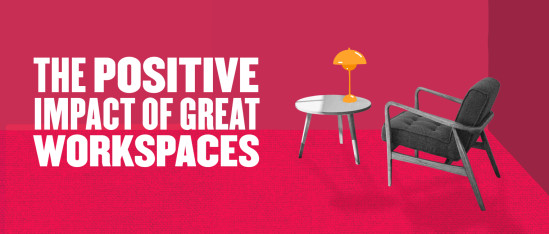On 9th August 2022 at HiBob UK, we officially opened the doors of our new office in London. This was a large-scale, cross-functional project. Within HiBob, we worked with our finance, procurement, legal, IT, marketing, and branding teams.
We also worked closely with many third parties, including our real estate broker, fitout partner, and designer. We worked with a furniture contractor, plant suppliers, cleaning companies, a moving company, fire safety assessors, and party planners to kick off our opening day.
The overall responsibility for coordinating this gargantuan effort and ensuring we executed it properly sat with our HR team.
The more I talk to HR leaders, the clearer it is that more and more companies consider us responsible for handling office space challenges. So, why has this traditionally operational role evolved into a discipline sitting firmly in the HR space?
Where HR, office space, and business ops meet
HR taking on responsibility for office space issues isn’t an entirely new trend. The role of HR has been evolving for a while—across industries worldwide. The COVID pandemic just accelerated the process.
For example, many companies have relied on exceptional office environments to attract and retain exceptional talent. Today’s workforce often expects centrally-located offices housed in beautiful buildings.
Now we’ve learned that what worked before COVID no longer fits our post-COVID workforce. It’s not that traditional office spaces weren’t fit-for-purpose, but that the purpose of the space and the way people use it has changed.
This is exactly what we experienced at HiBob. Let’s take a look.
New work structures need a new kind of office space
Like the majority of businesses across the world, we closed HiBob’s office doors in the spring of 2020 and sent our teams home in response to COVID protocols. And, like professionals worldwide across many industries, our team members did not return to the world of pre-pandemic work structures when HiBob’s offices re-opened.
When pandemic restrictions started to lift, we already knew that our people were extremely productive working from home. So, we seriously considered going permanently hybrid.
We consulted with our people first by surveying them. This helped us understand what they liked about working from home and what they missed from the office. In the end, our Bobbers told us they neither wanted to be fully remote nor in the office five days per week.
In the same survey, Bobbers also told us they wanted different things from the office than before COVID. They weren’t asking for a desk, chair, and computer screen. They wanted to come into the office to see their colleagues and interact with them. They wanted to be inspired and energised through teamwork and face-to-face interactions.
When we reviewed people’s responses, we realised that our existing office set-up did not meet these new demands.
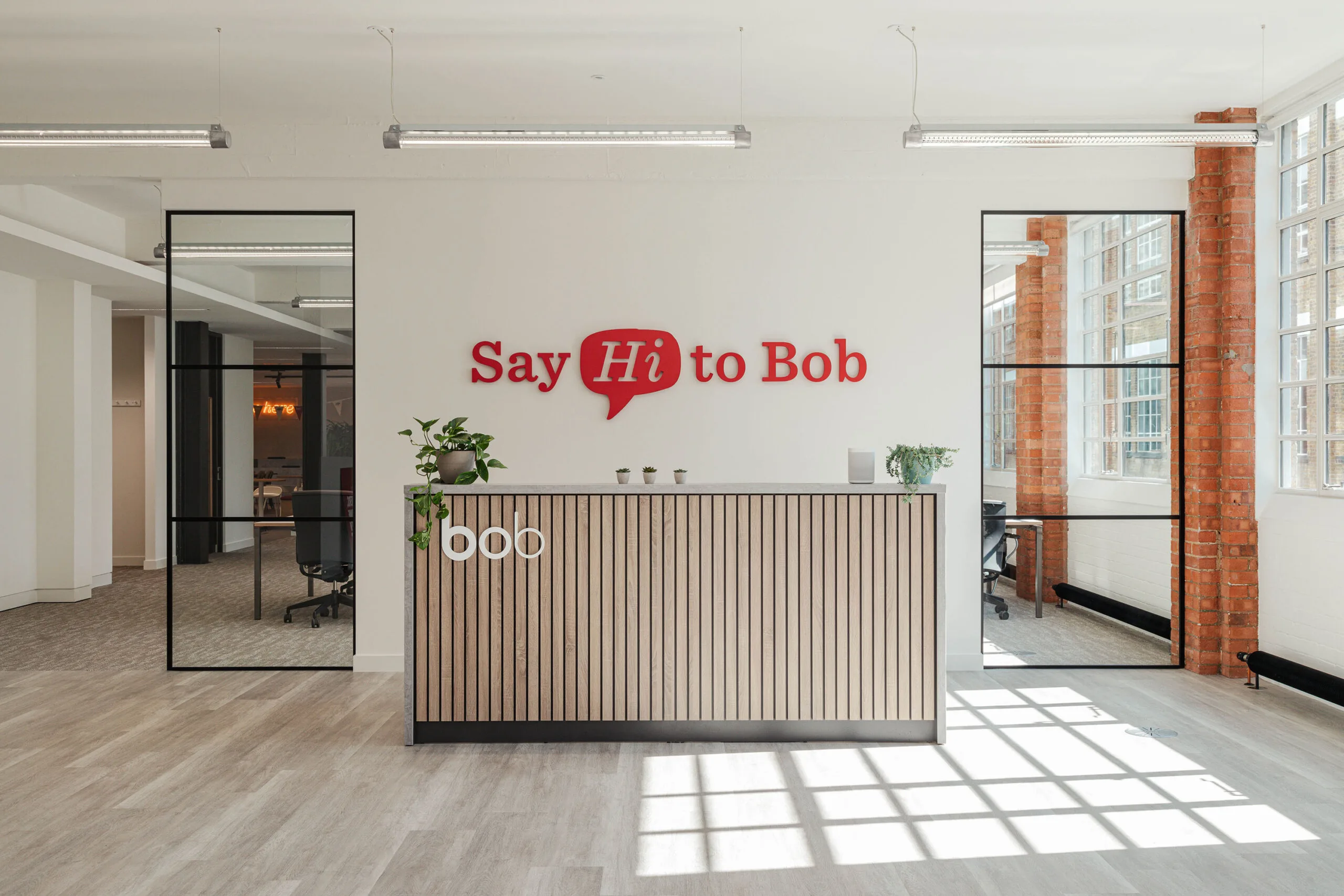
New pains for businesses in a post-COVID world
Before the pandemic, we were a growing business, and we squeezed a lot of desks into a small area. These desks took up around 80 percent of our floor plan, along with meeting rooms and a few private calling booths. And when we first rolled out our hybrid work policy (two days per week in the office), we experienced resistance from people.
Whilst working from home during COVID, people got used to having quiet, private spaces to do their daily work without many interruptions. When they returned to the office on those two days per week, they found it hard to concentrate in the loud, crowded desk areas and found working in the office difficult.
They looked for meeting rooms or (more specifically) calling booths to take their calls but found we needed more. When they searched for alternative quiet spaces around the office, they discovered our sofa and beanbag areas. These became overflow meeting spaces, making them unavailable for what they were initially designed to be: areas for people to interact casually.
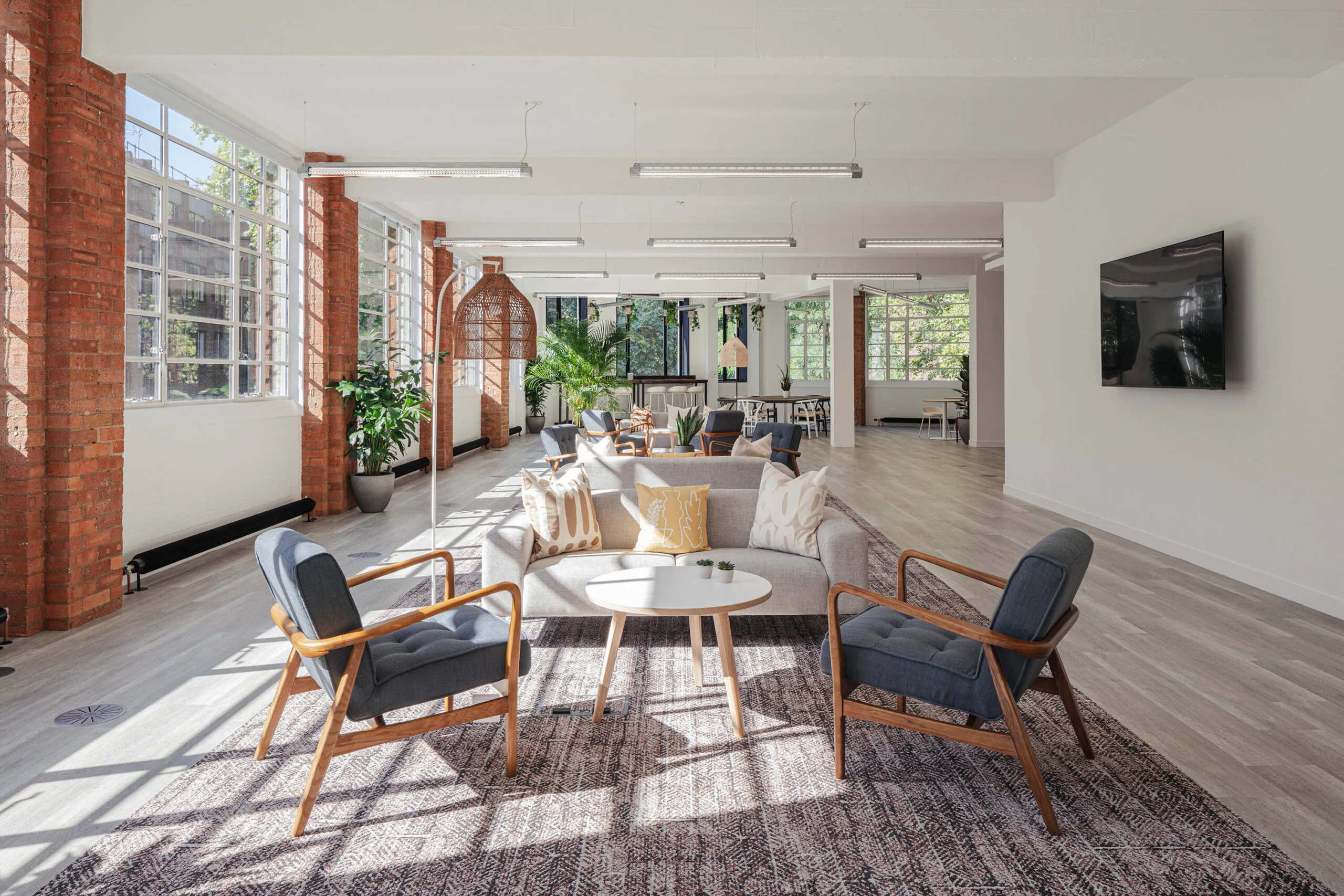
Redesigning the office based on people’s needs
It was clear we had outgrown our office (in more ways than one). First, we decided to find a new space to accommodate our growing team. But it was also clear that we needed to rethink how we used the new space. We needed a fresh pair of eyes to help us.
Instead of simply finding a larger version of our office with a pre-COVID setup, we looked back at the responses from our people survey. This helped us understand how a new office design could become the greatest lever for supporting our hybrid work policy.
In the survey, people told us in detail about what kinds of environments helped boost concentration, reduce stress, and improve productivity.
We realised Bobbers were looking for something they could not find at home: diverse and spacious work settings that allowed them to change environments several times a day. The optimal space would have high ceilings and light-filled rooms, all in a central location that was easy to get to.
Limiting office provisions to a simple desk, chair, and screen was no longer enough. People have all these amenities at home—and, if we’re being honest, they’re often nicer than the office could ever provide.
I can relate to this personally. In my study at home, I work at a desk that used to belong to my father. I had it renovated after he died. It is and will always be nicer than any desk I can sit at in a company office.
In addition, commuting to the office costs time and money. I have to get up early and battle my way through the crowded London streets. It is an effort and, therefore, a trade-off to come to the office. In other words, it’s up to companies to make their office space something to get excited about coming in for. Environment really matters.
A great office offers so much more than just a desk
As we started to design our new space, our mantra was “more than just a desk.”
Our architects and interior designers took this to heart and created something truly beautiful. We set up multiple working stations and made sure they had power supplies. In addition to desks, we included high tables, collaboration tables, cafe areas, and high benches overlooking Clerkenwell Green.
We studied how our team conducted meetings and realised many were one-on-one calls with customers and prospects. So, we went big on calling booths and installed more single-person meeting spaces than conventional meeting rooms.
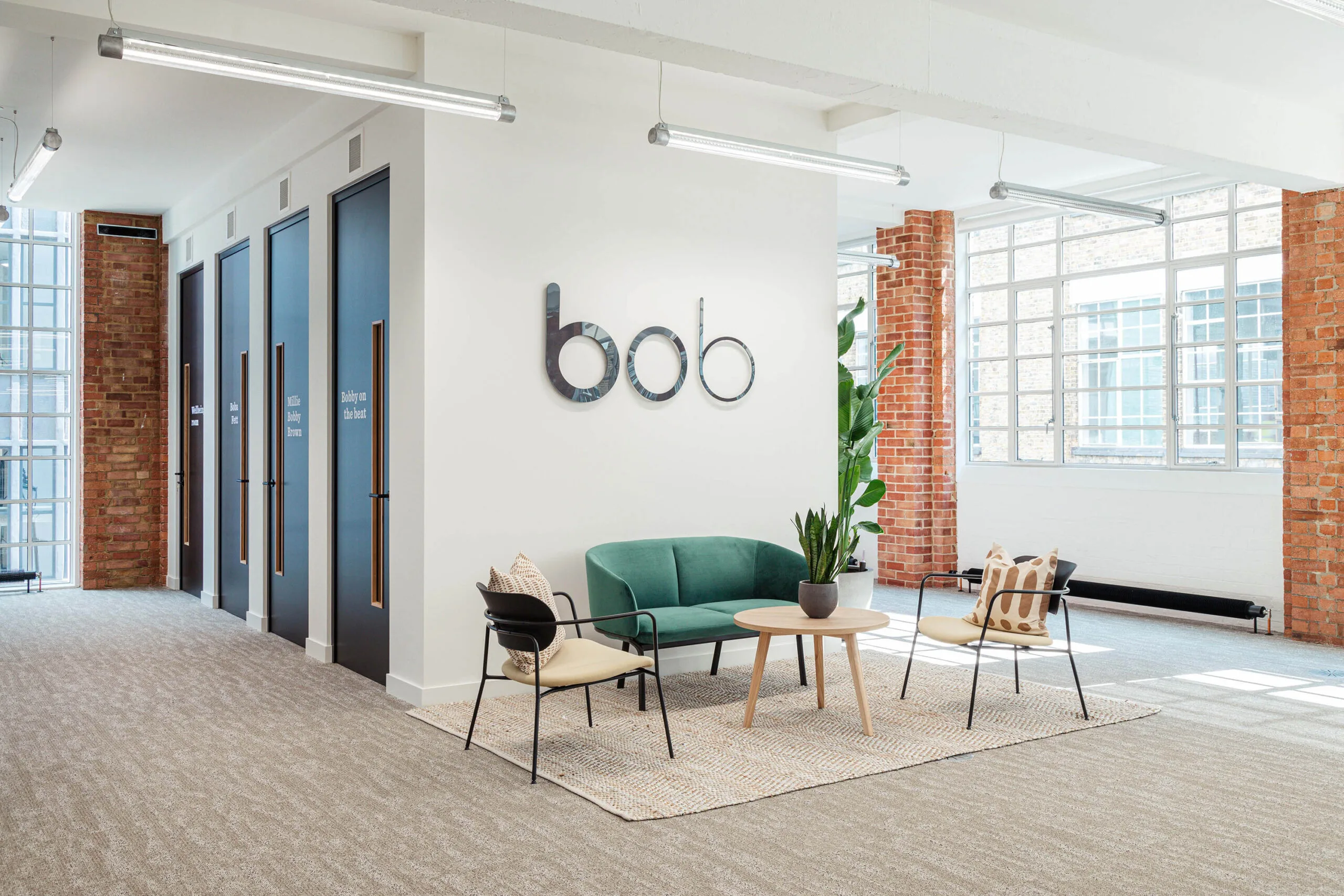
Creating spaces that celebrate diversity and speak to business needs
One of our company values is “bring me, win as we.” At its core, this value celebrates the diversity of our individual team members when they come together to win as a collective. The physical office space plays a critical role in bringing this to life by catering to different working styles and character types.
But, as we observed people using the new office, we learned that the space alone is not enough. We are a scaling business, and our team tripled in size in the last 12 months. Many team members do not know one another.
After we moved, we noticed that people opted to sit at the same desk each day. To encourage people across different teams to get to know each other, we introduced bi-weekly “desk shuffle days.” On shuffle days, we assign people a random desk next to colleagues they might not know.
This is why we see the office space as our canvas and our HR team’s engagement innovations as the paint and the brushstrokes. Having a beautiful, thoughtfully designed office does not, on its own, nurture culture and create strong connections between colleagues.
Office design guided by the innovative use of space
At HiBob, we regularly innovate how we use the space, from our Olympics-themed summer party to Bobber-hosted Happy Hours.
For example, in October 2022, a particular highlight was our Diwali happy hour, hosted by three Bobbers. The event sparked spontaneous conversations about the holiday. Those of us new to the festival asked our colleagues about how they celebrate it with their families. It was a cultural and educational experience that taught us new things about our co-workers and helped us meet new people at work.
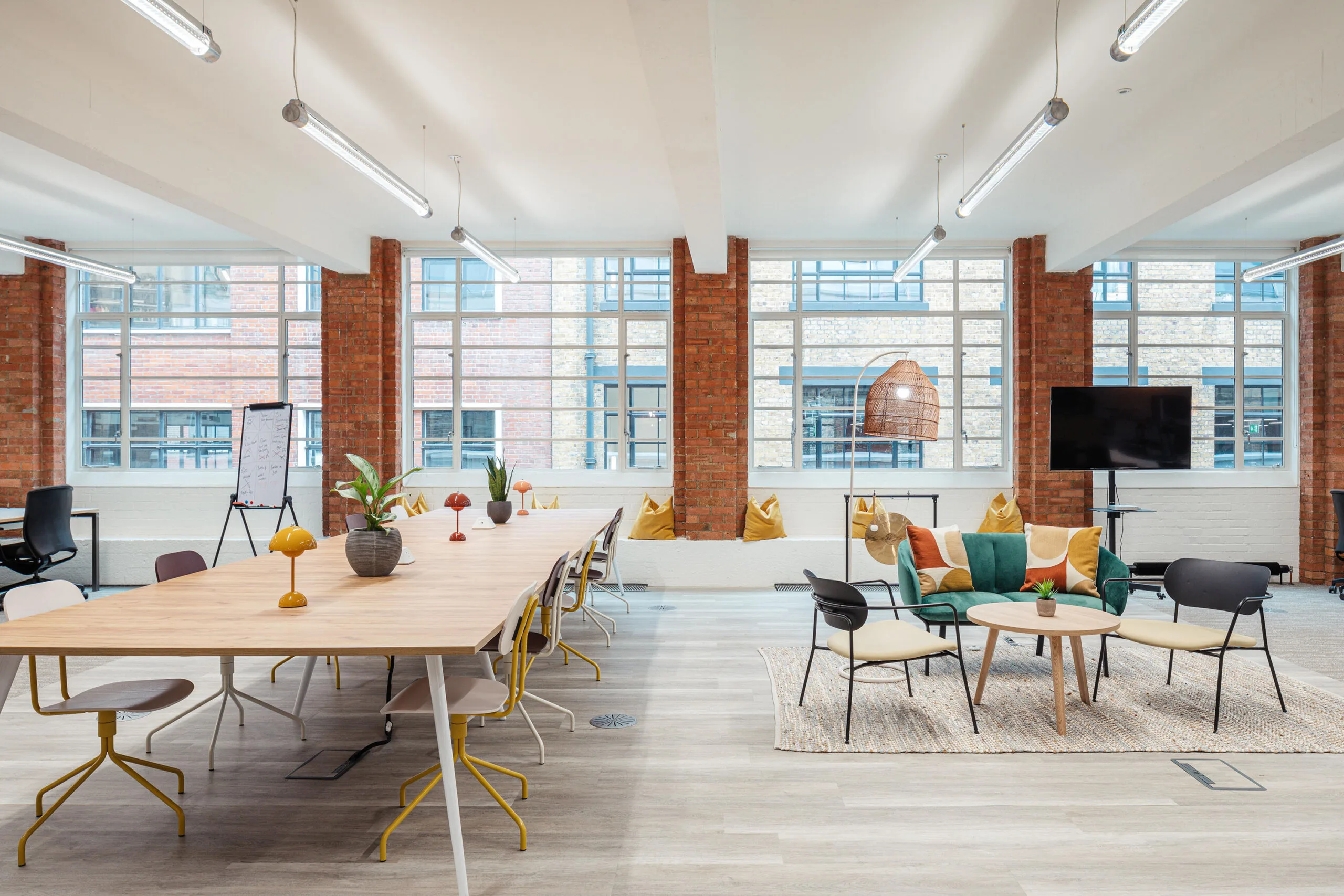
We also made it a point to invest in our office’s new central cafe area with a professional audio/visual setup. This makes it easy to run team meetings and events—some of which include customers and prospects—and expand the reach of our connection to those outside our immediate company.
Flexibility is at the heart of this space’s design: It helps people see the office not just as a place of work but as a space for them.
Recommended For Further Reading
Why optimal office spaces meet the needs of your people, now
For companies that have come up with a hybrid work approach but meet resistance from people on the uptake, ask yourselves: “Does our office redesign allow us to use the workspace differently?” If the answer is “no,” it may be worth considering if the design meets the current needs of your people.
When we asked ourselves this question, the answer was “no.” Since moving to our new office, plus getting creative with how we facilitate team connection, we have seen a significant uptick in team members coming to the office. We even see colleagues visit more than they are required to and sitting at different locations throughout the day. They tell us it’s an environment they love to be in.
How HR can tackle the challenges of taking on the office
The classic HR skill set that attracts many to the field doesn’t include the skills required to manage large-scale office moves and design projects—plus the responsibility of running day-to-day office operations.
To succeed and grow with the times, we in HR need to learn these new skills on the job. We should also consider hiring non-traditional HR profiles. When we commit to learning new skills and expanding our HR capabilities into creating amazing office spaces, we’ll see a profound and positive impact on our people and the business.
From Toby Hough
Toby is the Sr. Director of People and Culture for Europe at HiBob, and has spent the last 10+ years in high-growth organisations from the London Olympics and Paralympics to Silicon Valley and London-based startups. When he’s not geeking up on the latest HR practices, you can either find him with his singing group or in the outdoors, sailing, cycling, and hiking!
